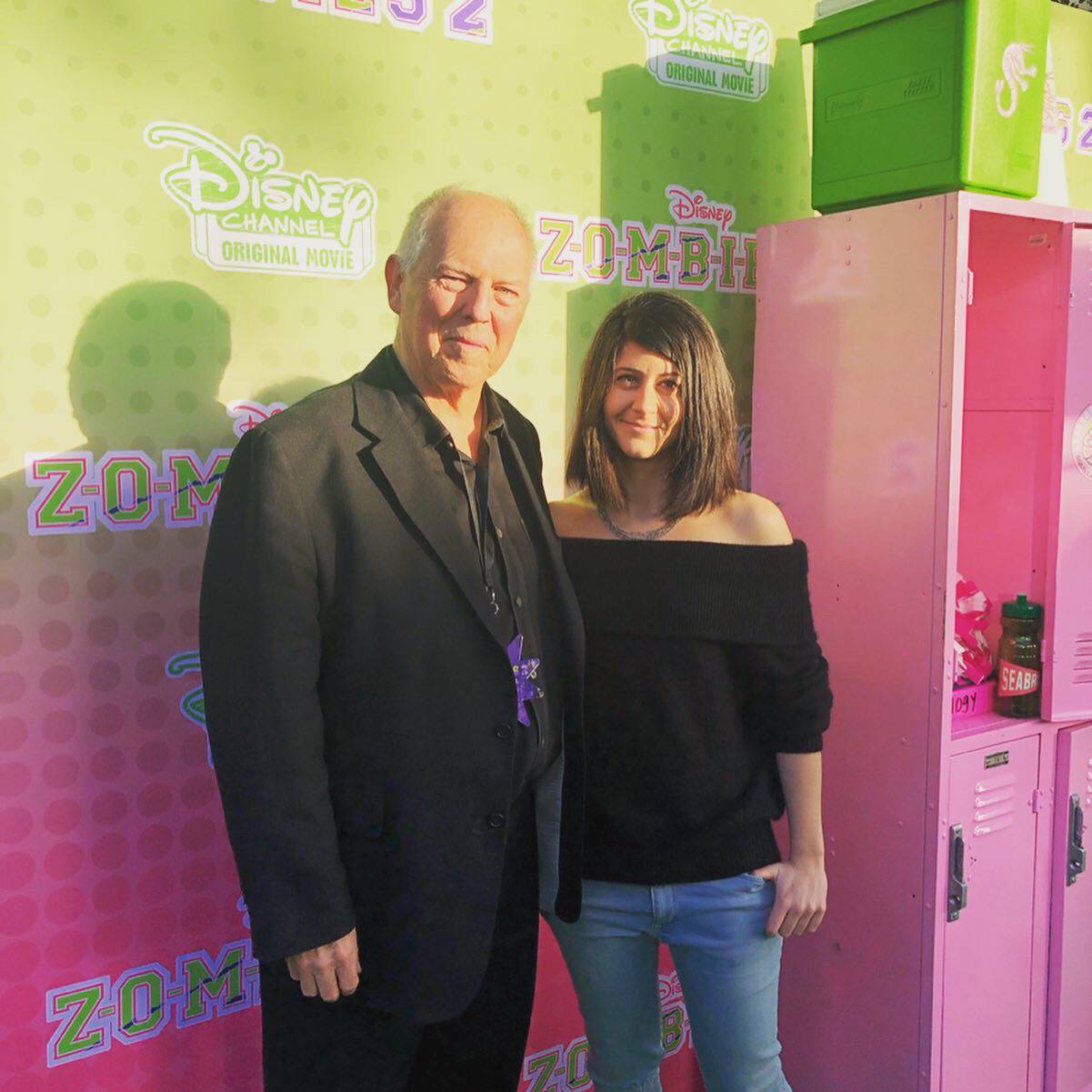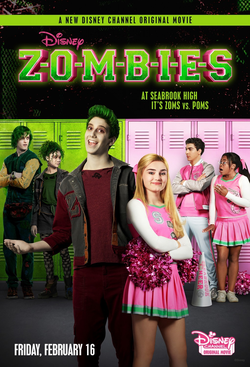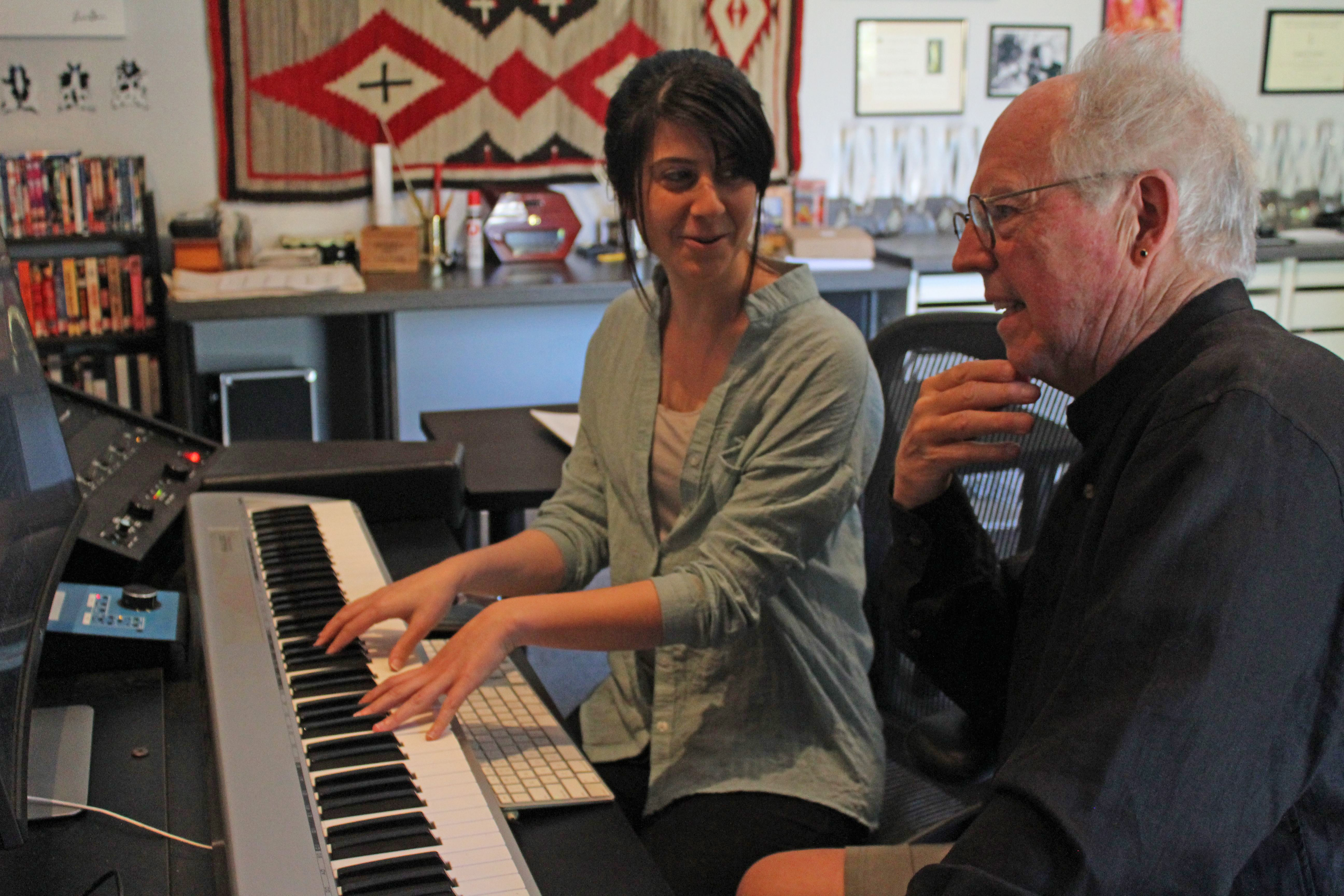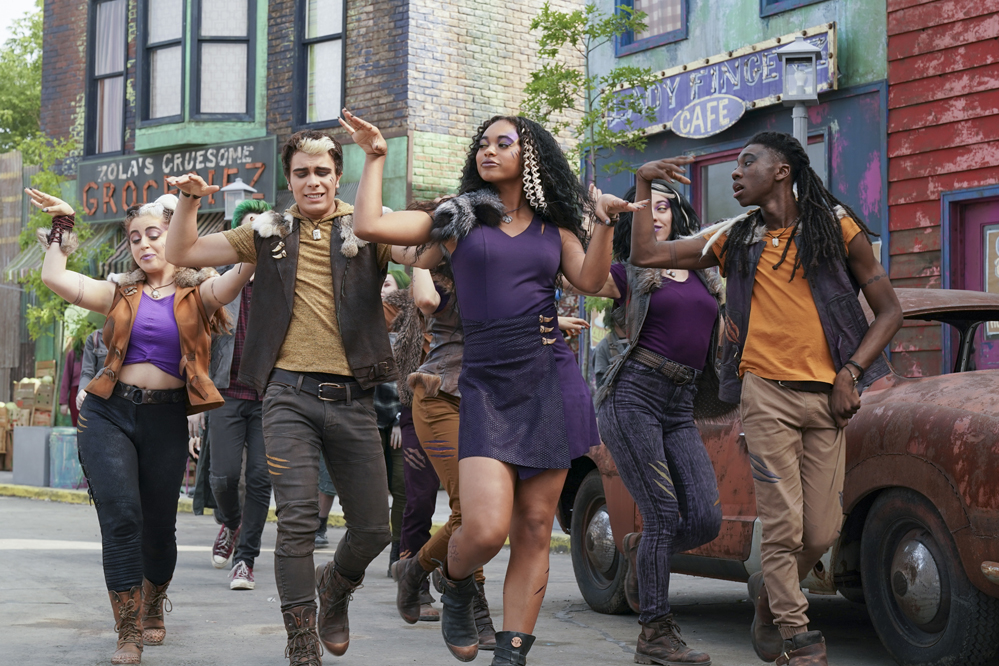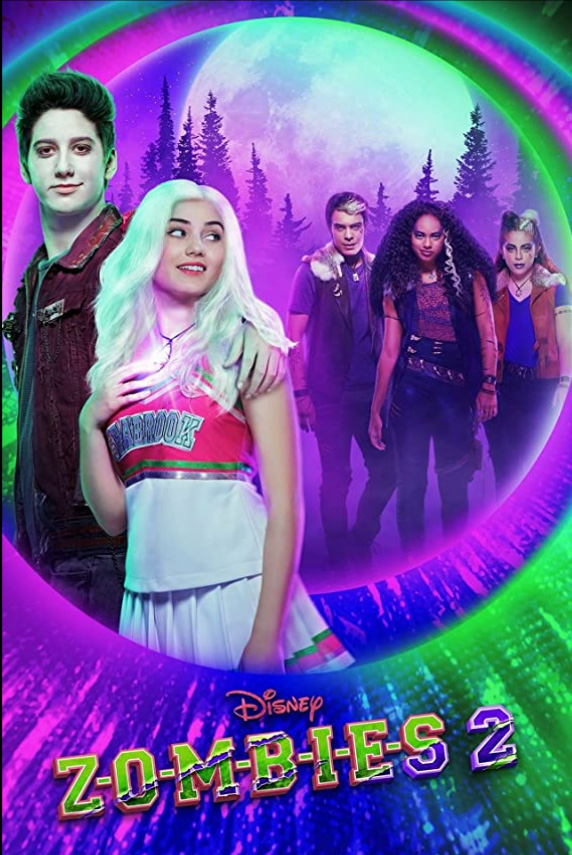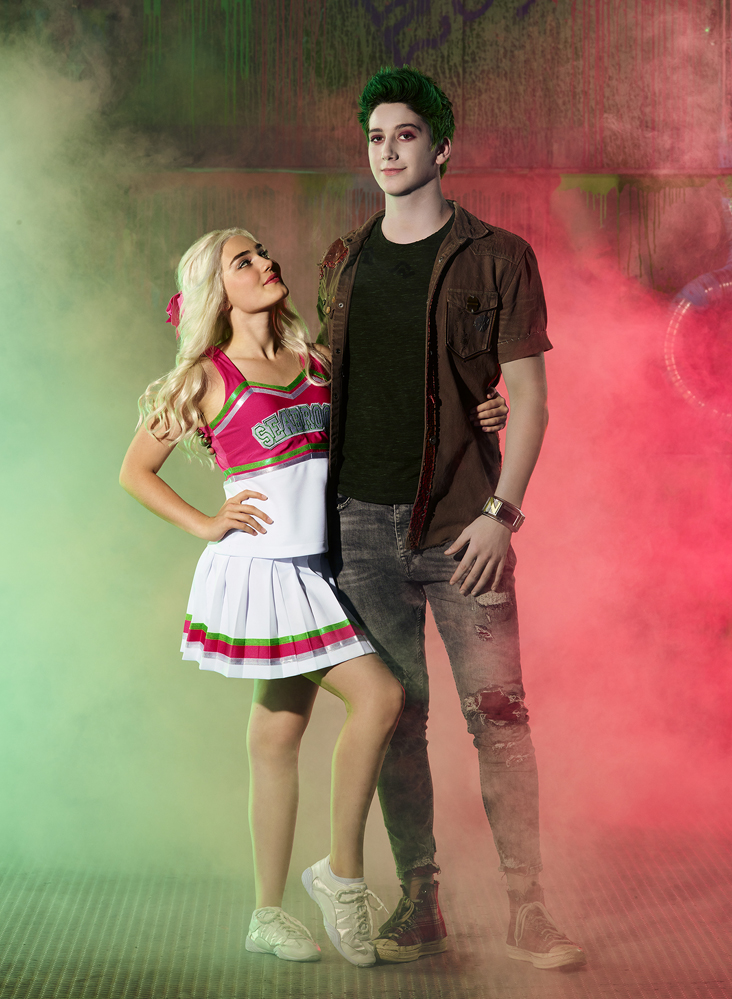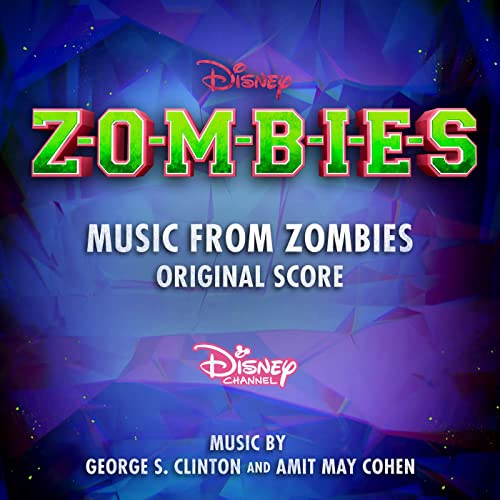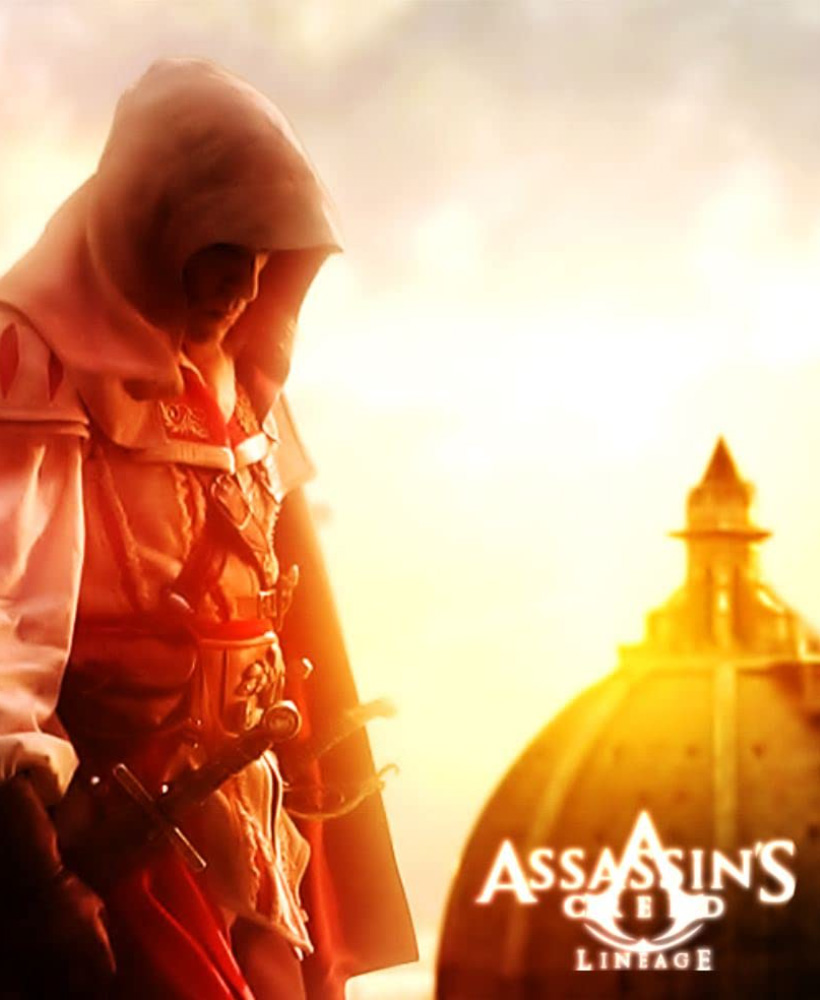November 23, 2020
Scoring Disney Channel’s Z-O-M-B-I-E-S: A Chat With George S. Clinton & Amit May Cohen
Interview by Randall D. Larson
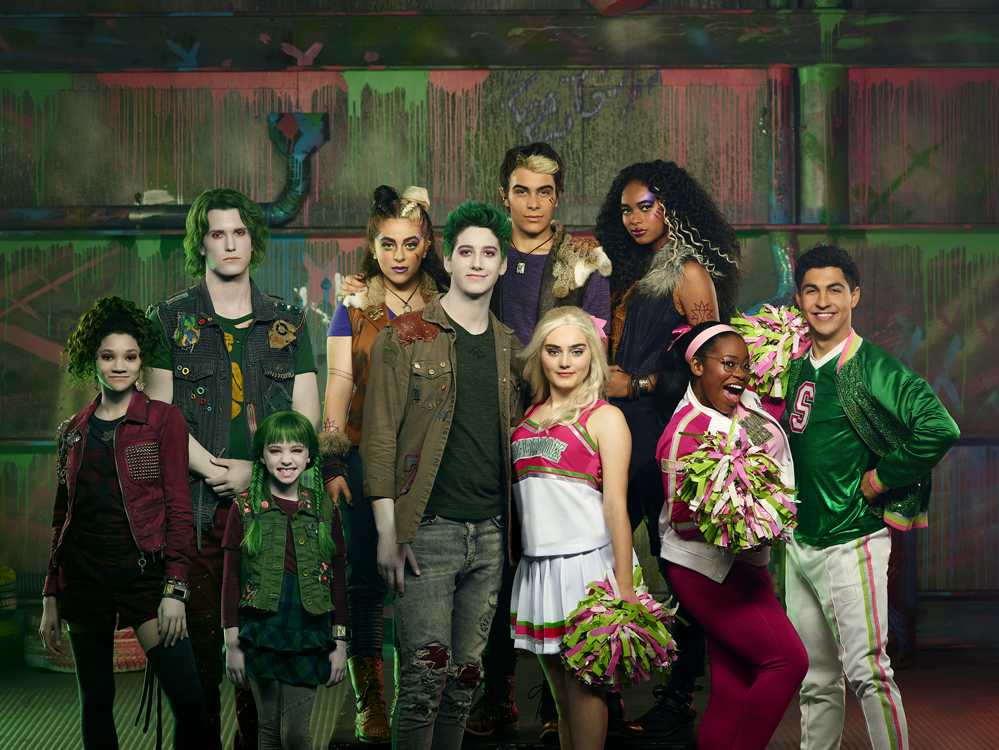
Z-O-M-B-I-E-S is an original musical and dance comedy movie that premiered on The Disney Channel on February 16, 2018. Directed by Disney Channel veteran Paul Hoen, the film is based on Zombies & Cheerleaders by David Light and Joseph Raso, and stars Milo Manheim and Meg Donnelly, playing zombie football player Zed and human cheerleader Addison who meet and fall in love, and who must work together to show the town of Seabrook what they can achieve when they embrace their differences and celebrate what makes them a community. A sequel, Z-O-M-B-I-E-S 2, premiered on The Disney Channel on February 14, 2020, continuing the adventures of Addison and Zed, whose budding romance is threatened by the arrival of werewolves.
Soundtrack albums featuring songs from each film were released by Disney Music Group concurrently with the release of the movies. A score soundtrack was released on Friday Nov. 20 through Disney Music Group; it is a compilation of the music by George S. Clinton and Amit May Cohen from Z-O-M-B-I-E-S and Z-O-M-B-I-E-S 2. The digital album is available from these links.
Q: George, coming into Disney’s ZOMBIES, what was your take on scoring a zombie movie, Disney style, and how did the conflict in trust issues between the humans and the friendly zombies in the story allow you for some dramatic moments in the music?
George S. Clinton: One of the fun things about getting into this was the production that director Paul Hoen instilled into the movie. They don’t condescend—his movies are like feature films, and so everybody wanted my approach to be as it were a feature film. One of the great things about it is the theme that they have between acceptance, where these zombies who are now friendly are finally being accepted into the Seabrook community. And so there’s this struggle: some people don’t like them being a part of it, some people do like them being part of it, and so there’s this back and forth about acceptance, and in the end they’re not only accepted they’re appreciated for their differences. That gave me the opportunity to create a Seabrook theme, a theme for the mayor of the town, and a happy zombie theme, but then there’s also this really serious monster zombie theme that we got to do, and there was a cheerleader theme. Those were the main themes in the first ZOMBIE.
Q: Amit, you came in to compose additional music for the first ZOMBIES film. Would you describe what that entailed and how you worked with George on completing the score for this film?
Amit May Cohen: My work for ZOMBIES 1 started with doing mostly tech work for George, where I would help with the mockups. We didn’t have a budget to record with a full orchestra so we had to make sure that that mockups sounded as best we could, and my job was to sit on the workstation right after George finishes, and then start with the mockups and make sure they are at their highest potential. And then that led, at some point, to also do some revisions with him when we did get some notes. We didn’t get a lot of notes, but there were some.
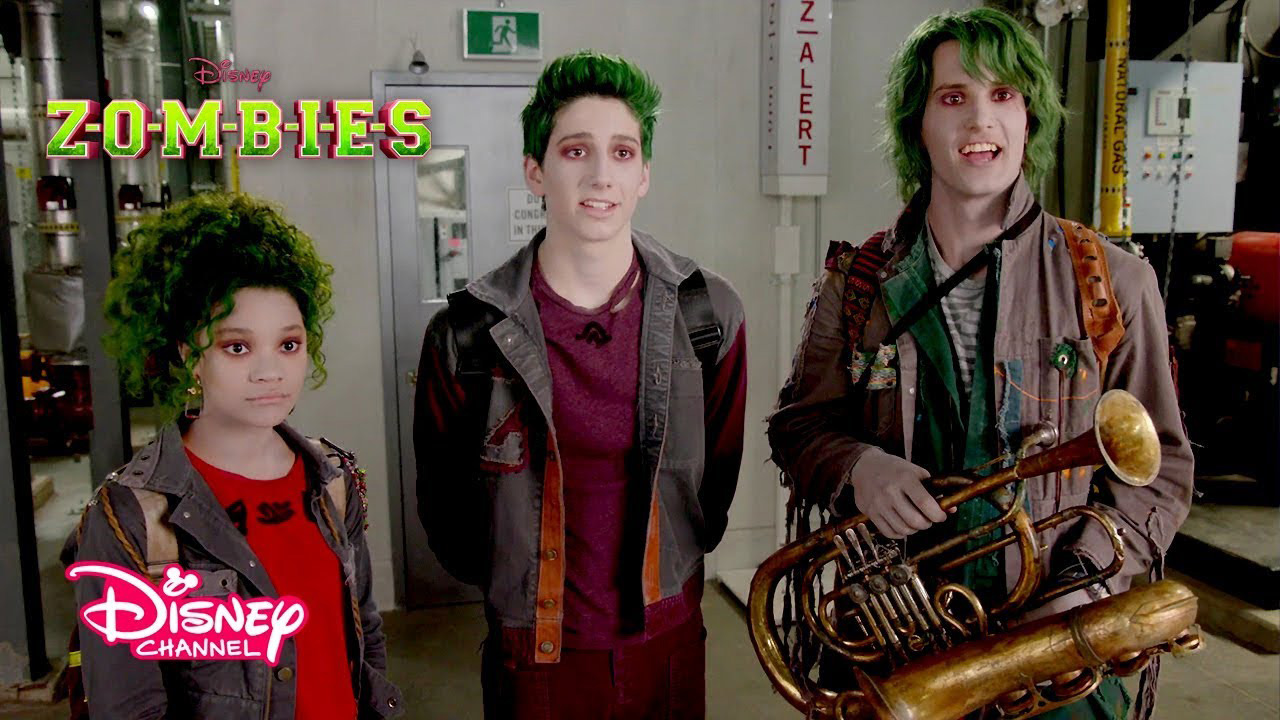
And then the additional music, George asked me to create the sound for Bonzo [James Godfrey], who’s one of the more musical characters, he plays this horn that is like a combination of several instruments, it’s this big brass horn, so my job was to figure out what that would sound like. That took an entire day of figuring out because we just tried different combinations, and then in addition to that there were a few cues that I helped on, but I guess George liked what I did so he asked me to co-compose ZOMBIES 2 from that!
Q: George, being that the film is a musical comedy, how did you navigate your score around the song & dance numbers that pop up every so often?
George S. Clinton: One of the things I got really good at with the AUSTIN POWERS movies was being able to navigate between songs and dance numbers. It’s definitely an art in and of itself. One of the things you have to be careful of is that if you’re coming out of a song that’s in a certain key and you have a segue into a piece of music, you have to make sure that the music coming in is going to be compatible and not sound like a train wreck when it starts and the other ends. Another thing we did was we utilized some of the thematic material from the songs in our score, so that the score didn’t sound like it was from one world and the songs from another world. One of the fun things to do is to take little snippets of melody and weave them in and out of the score, so the audience’s ear is used to hearing it. They’ve heard it in the song, and they hear it again in the score, and it makes it more of a single experience.
Q: Amit, how did you and George work together on scoring ZOMBIES 2?
Amit May Cohen: We have two workstations in George’s studio, so we’d each have a station to work at. First we made a list of the cues and we decided who does what, and it came out to be half-and-half. So George asked me to write the theme for the werewolves and I could sit at my station, he would sit at his, and then about half way through the writing we would take a break and then show each other what we wrote, and then workshop each other’s music. So it was a very collaborative process, and we worked on all of the tracks together. Then we would sit at the main station and just make sure that the mockups all sound really good. At the end of the writing week, we would put all of the tracks to the picture and watch every reel to make sure that it’s not exhausting to the ear, it sounds great, it supports the narrative, and it works with the songs.
Q: George, how did your thematic configuration for the first film extend and then develop in the sequel?
George S. Clinton: One of the fun things about doing sequels—and I’ve done a bunch of them—is that when you first start writing it’s a blank canvas, so you paint the theme that you’re going to use for Seabrook or for the happy zombies or for the scary zombies and for the cheerleaders. Those three characters are going to be in the next movie, and so the canvas is a little less blank when you get to the second one. You know you’re going to have thematic material that carries on into the second movie, and one of the things that I wanted to do was to make sure that the werewolf stuff was really fresh and that’s one reason I asked Amit to take over all the werewolf music, and she did such a great job on it. What’s wonderful with working with other composers is they do things that you didn’t even think of! I try not to beat myself up about that, especially if there are co-credits! So the werewolf theme was the newest part, and there was some more action music, too, and then the moonstone* theme was in there as well, and we worked on that together.
* [The Moonstone is an ancient crystal that is used as a power source by the werewolves. It was taken away from them by humans and used it to power the town of Seabrook, which took place before the accident with the green haze that turned people into zombies. The werewolves have small pieces of the moonstone embedded into necklaces, that have to be recharged or they will die.]
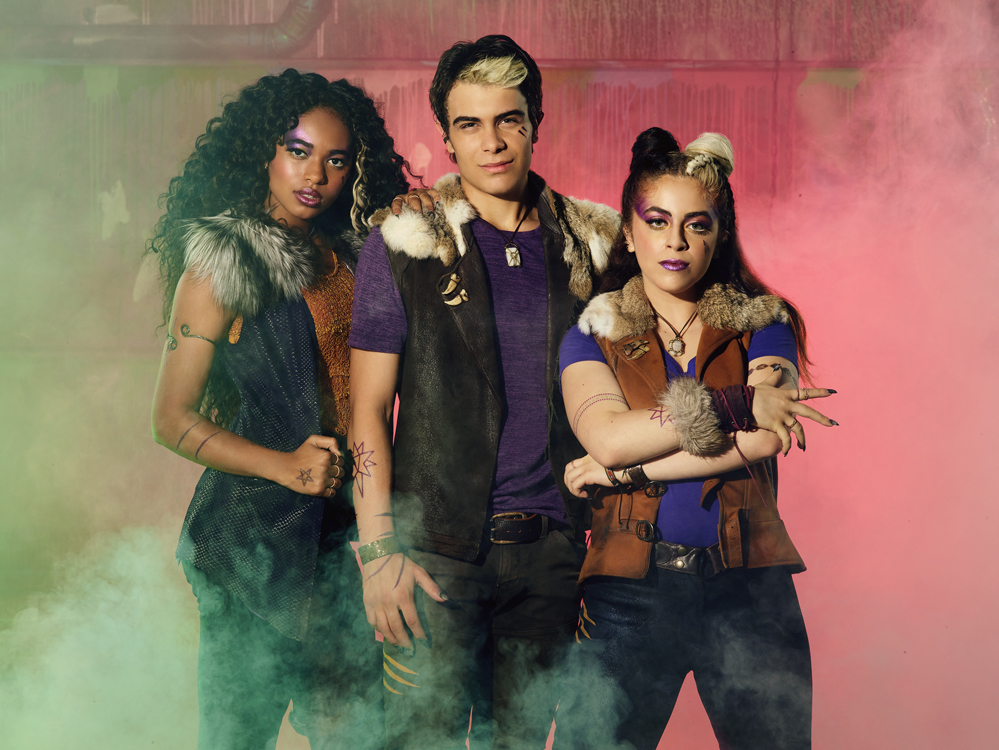
Q: Amit, how did you treat the werewolves in ZOMBIES 2, as that film’s primary antagonists?
Amit May Cohen: Before we write we had to come up with a certain description that works for them, to figure out how they are different and what their sound should be.
George S. Clinton: That’s something that we choose to do, nobody asks us to do that. We do it to get a good idea for what it needs to be musically.
Amit May Cohen: That was the first thing that we did. Both of these scores have a lot of melody—these movies are very melodic and very active, so something that would be a big contrast to that would be if we composed a more atmospheric theme for the werewolves. And if you listen to the werewolf theme you can notice that it’s just a small harp melody in the background which doesn’t last for a very long time, and then it’s blended with a lot of synthesizers and there’s a lot of space. Every time the werewolves are there they had sound design in the background—howling and wind and a lot of sounds going on, so we wanted to make sure that blended very well with our music. A way to do that is to give a lot of space in the music, so we chose to use some special instruments like the Shakuhachi flute—the Japanese wood flute—and that was a new instrument that we hadn’t introduced on these scores before. So combining that with the rest of our sound was very unique.
Watch the trailer for the first ZOMBIES:
Q: George, what was the musical palette for both of these films? Were live instruments used, like the harp and the Shakuhachi flute, within your larger digital musical environment?
George S. Clinton: It was mostly digital. We did use Shakuhachi. One of the things when the werewolves were being bad-ass was electric guitar, and we put that on live, as well. One of the things that Amit is extremely talented at is making samples sound like a real orchestra, so basically it was orchestral sounds for the big action scenes or the zombie stuff; for the more romantic moments it would be just strings and maybe woodwind or harp, and for the fun zombie and the cheerleader and Seabrook it would be like marimbas and flutes and shakers and some kind of rhythm playing, so there were four or five different ensembles that we created. What we do is divide the cues into categories, so this cue is going to be Seabrook, and this cue is going to be werewolf, and this cue’s going to be moonstone action, or whatever. And so if we do that we identify the instruments that are going to be applied to each one of those categories.
Q: I’m pleased to see they’ve released a score soundtrack. How did that come about?
George S. Clinton: It came out because a guy named Steve Vincent, who’s the music executive at Disney Channel, really pushed for it. He’s great and I’ve always enjoyed working with him and I’d worked with him prior to this. So he left it up to us and said, “You guys choose what you want to go on there and produce it yourselves and mix it, and I’ll get it released.” I think this is their first score release for the Disney Channel.
Q: Amit, I wanted to ask you about a new scoring project you’ve been involved with, THE COUNTRY CLUB. What can you tell me about this film and your score?
Amit May Cohen: Oh, I’m so happy you brought it up! I was asked to work on this movie in May. It was a very fast project. I got an email from the director, Fiona Robert, on a Friday. They were trying to reach out to a friend of mine to do the score, but she was too busy so she referred them to me. I got the email and immediately responded. They sent me the rough cut, and then on Saturday we had a phone call and they wanted me to start writing it on Sunday, because the music needed to be done three weeks after that. So that was like super fast and furious! But it was so much fun because, first of all, the film is so funny already without music, which tells you how funny it is! There were a lot of things that I hadn’t been asked to do before, like they wanted me to do something more similar to, not video gaming but very goofy sound palettes and thematic material, and all of the characters in this movie are very extreme. So, writing music for extreme characters is even more imaginative and it was just so much fun.
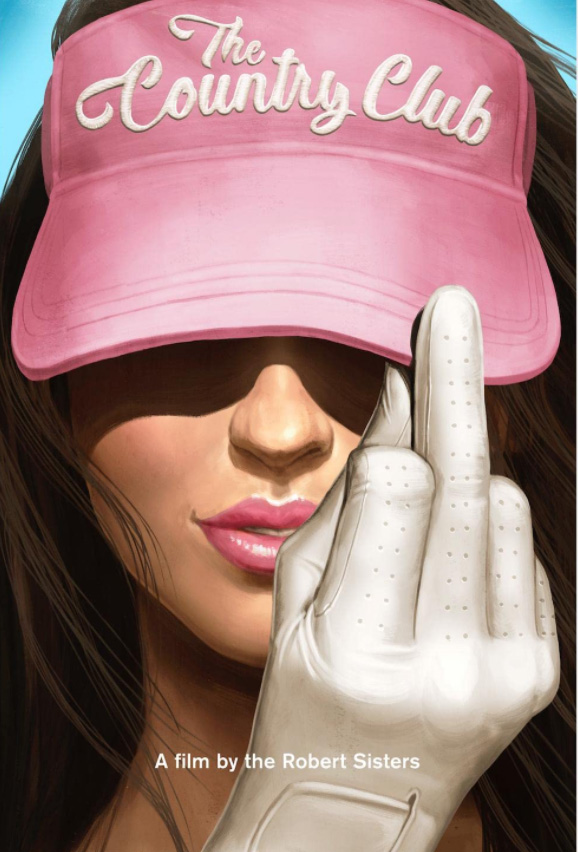
Because I had worked with George for four years now, we had talked about some of his approach to scoring comedy, and one of the things I kept in mind while writing for THE COUNTRY CLUB was his approach for AUSTIN POWERS, which was: the music always keeps a straight face, so if the music is very serious it can make the comedy even funnier. That’s something I really enjoyed keeping in mind, because even though the characters were really extreme and therefore were quite bizarre it was really fun in the most extreme parts to actually keep a straight face with the music, which made the movie come out even funnier.
Q: George, I wanted to ask you about a score you did back in 2009, the 3-episode TV series ASSASSINS CREED: LINEAGE, which was the first live action film based on the extremely popular video game series. What can you tell me about scoring this TV iteration of the game?
George S. Clinton: You know, that was so much fun. The director of the Lineage series was somebody I had worked with before on a lot of different things, he’s French Canadian, named Yves Simoneau, and so when Ubisoft asked him to direct those, he asked me to do the score, which was great because I’d never done any green screen scoring before. The movie when I got it was actors in costumes with props in front of green screen. Everything else in the film would be rendered by CGI. So it was interesting scoring that way, but little by little, as I got new cuts of these films, the picture became more and more there. By the end, it was just amazing, and the CGI stuff that they could do was just unbelievable. They had a limited budget so I couldn’t use a huge orchestra, but I knew I wanted to have live instruments on it, so I used a chamber-sized orchestra and recorded it, I think it was in Seattle. It just came out great. I got to do all sorts of epic sounds—one of the things I did was I kept all the strings really low, because if you have a small string section and you make them play high you can really hear that it’s not a big section. If you keep things low, it sounds nice and fat and epic and big. So I use those live instruments and some horns, along with the digital samples. I was unfamiliar with the game—I had heard of it but once I got hired I checked it out and it was fascinating, you just really get sucked into this world, and these movies were to give background, with live actors, to the characters who were going to be in the Assassins Creed 2 game.
Q: Any final comments from either of you on the ZOMBIES movies that I haven’t asked about?
George S. Clinton: I would only say that if you think that the ZOMBIES movies are just for young kids, you’re wrong, and you’ll really enjoy watching them. If you’re stuck at home during this pandemic and you want to spend some fun time and feel a little better after you spin it, check ‘em out! And don’t forget to buy the score!
Thanks to Ray Costa and Lana Lay of Costa Communications for facilitating this interview. Photos from Z-O-M-B-I-E-S 2 premiere courtesy of The Disney Channel; Photos of George and Amit in George’s studio taken by Deanna Archetto, courtesy of Costa Communications.
Related Story: See my previous interview with George S. Clinton, “No Escape: George S. Clinton Recaptures Harold & Kumar – The Serious Side of Scoring Comedy” in my April 2008 Soundtrax column
Watch the trailer for ZOMBIES 2:

